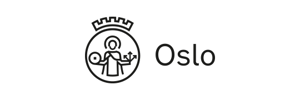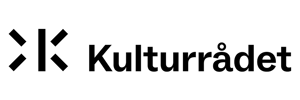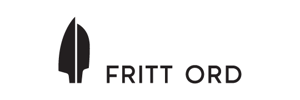Ndiakhass
Ndiakhass means patchwork in Wolof, and is a technique used to create festive attire in West Africa. It's a hybrid of tradition and modernity, where each piece has its own uniqueness, but together they form something new.
23.08.2024–23.03.2025
Intercultural Museum, Tøyenbekken 5
In the exhibition, the audience encounters six artists based in Senegal and Norway, each with a connection to the art scene in Dakar. Together, they create something new – not unlike patchwork.
Through various artistic expressions, the exhibition explores how our references and cultural backgrounds influence our view of the world around us. With respect and love for different cultures and traditions, the artists explores how one can encounter and share each other's culture and collectively create something new while preserving the unique.
Textile expressions and depictions of people who wear or dress themselves in textiles and cultural expressions are a recurring motif in the exhibition.
Artists: Torunn Skjelland, Samba Fall, Ibrahima Thiam, Fatim Soumaré, Cheikha Sigil, and Alioune Badara Diop.
The art scene on the African continent is characterized by interdisciplinary practices. In conjunction with the exhibition, there is an activity program including fashion shows, talks, art workshops, and film evenings.
Visitors will also receive a catalog featuring contributions from Mamadou Nidaye, Grace Tabea Tenga, and Caroline Ugelstad Elnæs.
Torunn Skjelland is a Norwegian artist based in Oslo. She has had a residency in Senegal and participated in the art scene in Dakar, where she made her mark with an exhibition at "Espace-Médina" after an artist residency in Saint-Louis. Her artistic expression includes paintings on various surfaces, and in this exhibition, paintings on bazin fabric. She explores the widespread use of duplicates of European luxury brands among young Senegalese, and how this signals status in the hierarchy. She views the use of replicas from the major fashion houses in Europe as a democratization of fashion, a freedom in the unregulated.
Samba Fall is a painter and video artist with a Senegalese background. He has studied in both Dakar and Oslo, where he currently lives. Samba is one of the first Senegalese artists to explore digital art and video animation with his group Artexpress in the year 2000, after graduating from the fine arts school. He is concerned with existential questions related to life, freedom, time, and space, which he expresses through figurative painting, video art, and multimedia expressions.
Ibrahima Thiam is a Senegalese artist and photographer. He works with memories, archives, African oral tradition, myths, and legends. In various ways, he collects images and inspiration, including from his own family archives, which contribute to shaping his imaginative world and allow him to interpret myths and legends from Senegal's ethnic groups.
Fatim Soumaré is a Senegalese artist who specializes in textiles and weaving, particularly the ancient African tradition of falè, and its cultural, social, and economic significance. She aims to spread and preserve the tradition and uses weaving threads to create artworks. Through her own brand Falè, she employs 200 craftswomen in five villages in Senegal. Her weavings range between patterns and formats from Senegal's traditions and culture, and more modern interpretations.
Cheikh Bamba Loum, known as Cheikha Sigil, is a Senegalese designer who expresses himself across various art forms – from fashion to street art, installation and multimedia, to sculpture and performance. Cheikha is also considered the founder of a renowned workshop in Dakar and has become a well-known name in Senegal, Africa, and the world. He has received numerous awards and recognitions, including references such as P. Dinard. Under his own brand "SIGIL," he is recognized among the fashion elite, designing for celebrities, leaders, acclaimed artists, and others.
Alioune Badara Diop is a Senegalese artist who entered the art world through his work as a carpenter. Here, he came into contact with artists who often ordered picture frames from him. Alioune then delved into the world of visual art in 2018 and quickly established a name and reputation as "an emerging artist from Medina – Gueule Tapée," his neighborhood in Dakar. He has now had several solo exhibitions and an artistic practice with international recognition. His artistic approach is eclectic, with a varied and diverse style that moves in all directions of the world.
Created by French-American designer Elizabeth Relin, WOWO embodies a deep love for prints and colors. Her eclectic silhouettes, imbued with a pop spirit, draw inspiration from a repertoire of traditional clothing. Honoring the fusion of cultures, WOWO uses fabrics crafted by artisans that Elizabeth Relin discovers during her travels across India, Africa, and France. One of the brand's signature pieces is the kimono, reflecting its unique blend of influences. WOWO’s unisex collections are meticulously crafted in a Parisian workshop.



Address: Tøyenbekken 5
Take any subway line to Grønland
Tuesday–Sunday: 11am–4pm
Adults: NOK 60,-
Children and youth (under 26): Free admission
Free admission for one person accompanying a person with a disability.
Free admission for everyone on the first Thursday of the month.

The Intercultural Museum is located on the former premises of the old Grønland police station. Today, the former cells are used as unique exhibition spaces.
Through engaging exhibitions, you gain insight into current social topics, arts, and culture. Explore your own prejudices, challenge your ideas, and expand your understanding of other cultures.